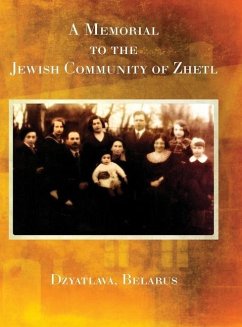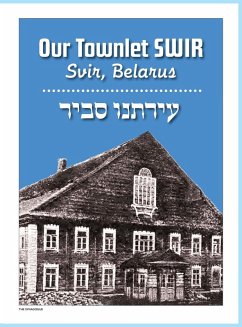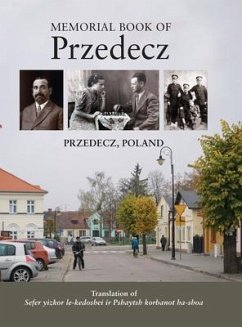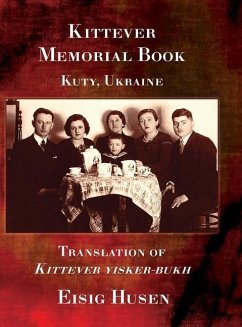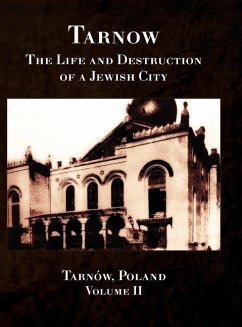
Slutsk and Vicinity Memorial Book (Belarus) - Volume II
Versandkostenfrei!
Versandfertig in über 4 Wochen
50,99 €
inkl. MwSt.

PAYBACK Punkte
25 °P sammeln!
Slutsk is a town in central Belarus about 60 miles south of Minsk. It was noted for its pleasant forests, vegetable gardens, and splendid fruit orchards and its produce was renowned throughout Russia. About 10,000 Jews lived there at the turn of the 20th century, a number that declined in the 1920s after the Russian revolution when the Soviets took control. The book paints a vivid picture of the town through a description of its peoples' professions and occupations: the tanners and foresters, the artisans and craftsmen, the water carriers, the shoemakers and carpenters, the Plikers (poor women...
Slutsk is a town in central Belarus about 60 miles south of Minsk. It was noted for its pleasant forests, vegetable gardens, and splendid fruit orchards and its produce was renowned throughout Russia. About 10,000 Jews lived there at the turn of the 20th century, a number that declined in the 1920s after the Russian revolution when the Soviets took control. The book paints a vivid picture of the town through a description of its peoples' professions and occupations: the tanners and foresters, the artisans and craftsmen, the water carriers, the shoemakers and carpenters, the Plikers (poor women who earned their livelihood by plucking feathers at the slaughterhouse) and the woman at Chanukah time weighing out a bit of griben spread on bread for a few small coins. Slutsk was also known as one of the centers of the struggle against Ḥasidism. It was a stronghold of the Mitnaggedim, "opponents" of the Hasidim who many regarded as heretical. The beginning of its decline took place immediately after the First World War. With the outbreak of the Great Revolution in Russia, gangs of Polish soldiers attacked cities and towns, carried out pogroms, murdered, robbed and abused defenseless Jewish inhabitants. Later, the Bolsheviks took control and, apart from bringing distress and hunger to the Jews living in the cities, destroyed much of what was part of their way of life. A chapter on Soviet rule describes how traders, merchants and small handicraftsmen were "declassed" under Bolshevik rule. Stores were emptied because private trade was marked for liquidation. Almost all the synagogues and houses of study were converted into amusement places, theaters, movie houses or warehouses for grain and merchandise. The final blow was the Holocaust. There were about 12,000 Jews in Slutsk and its region at the start of World War II, among them refugees from Poland who came in 1939, according to the book. The German occupation began in June 1941. In November of that year, a Lithuanian military detachment summarily shot many Jews. In 1942, Jews were locked into two ghettoes. One ghetto was liquidated in May 1942 and the other in November.









